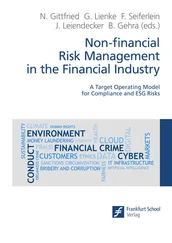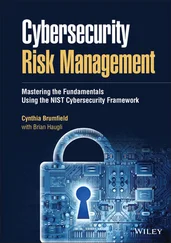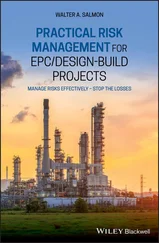1 Cover
2 Title Page
3 Copyright Page
4 Dedication Page
5 List of Figures
6 List of Tables
7 List of Acronyms
8 Preface 1
9 Preface 2
10 Preface 3
11 Preface 4
12 Preface 5
13 Preface 6
14 Preface 7
15 Preface 8
16 Author Preface
17 Acknowledgements
18 1 Introduction to Risk and Risk Management 1.1 Risk Is Everywhere, and Risk Management Became a Critical Issue in Several Sectors 1.2 ISO 31000 Standard 1.3 ISO 31000 Risk Management Workflow 1.4 Uncertainty and the Human Factor 1.5 Enterprise Complexity and (Advanced) Risk Management (ERM) 1.6 Proactive and Reactive Culture of Organizations Dealing with Risk Management 1.7 A Systems Approach to Risk Management
19 2 Bow‐Tie Model2.1 Hazards and Risks 2.2 Methods of Risk Management 2.3 The Bow‐Tie Method 2.4 The Bow‐Tie Method and the Risk Management Workflow from ISO 31000 2.5 Application of Bow‐Ties 2.6 Level of Abstraction 2.7 Building a Bow‐Tie 2.8 Hazards 2.9 Top Events 2.10 Threats 2.11 Consequences 2.12 Barriers 2.13 Escalation Factors and Associated Barriers 2.14 Layer of Protection Analysis (LOPA): A Quantified Bow‐Tie to Measure Risks 2.15 Bow‐Tie as a Quantitative Method to Measure Risks and Develop a Dynamic Quantified Risk Register 2.16 Advanced Bow‐Ties: Chaining and Combination
20 3 Barrier Failure Analysis3.1 Accidents, Near‐Misses, and Non‐Conformities in Risk Management 3.2 The Importance of Operational Experience 3.3 Principles of Accident Investigation 3.4 The Barrier Failure Analysis (BFA) 3.5 From Root Cause Analysis (RCA) to BFA 3.6 BFA from Bow‐Ties
21 4 Workflows and Case Studies 4.1 Bow‐Tie Construction Workflow with a Step‐by‐Step Guide 4.2 LOPA Construction Workflow with a Step‐by‐Step Guide 4.3 BFA Construction Workflow with a Step‐by‐Step Guide 4.4 Worked Examples
22 Conclusions
23 Appendix 1: Bow‐Tie Easy Guide
24 Appendix 2: BFA Easy Guide
25 Appendix 3: Human Error and Reliability Assessment (HRA)Human Errors and Violations The Rasmussen Skills‐Rules‐Knowledge Model of Human Error
26 References and Further ReadingReferences Further Reading
27 Index
28 End User License Agreement
1 Chapter 1 Table 1 Applicability of tools for risk assessment.
2 Chapter 2Table 2 Example of “what‐if” analysis.Table 3 Guidewords for HAZOP analysis.Table 4 Extract of an example of HAZOP analysis. Adapted from Assael and Kako...Table 5 Subdivision of the analyzed system into areas.Table 6 Hazards and assumed event in HAZID.Table 7 List of typical consequences.Table 8 HAZID worksheet.Table 9 Different classification of barriers as physical or non‐physical.Table 10 Comparison of defined hazards with insufficient detail and optimal d...Table 11 Comparison of defined top events with insufficient detail and with a...Table 12 Comparison of defined causes with insufficient detail and with an op...Table 13 Comparison of defined consequences with insufficient detail and with...Table 14 Barrier Types.Table 15 Quality scores and judgments on the effectiveness of barriers.Table 16 Standard Performance Scores (PS)
3 Chapter 3Table 17 Definition of BRFs in Tripod Beta.Table 18 Example of spreadsheet event timeline.Table 19 Example of Gantt chart investigation timeline.
4 Chapter 4Table 20 Barrier function score (FS).Table 21 Barrier consequence of failure score (CS).Table 22 Barrier redundancy score (RS).Table 23 Barrier criticality ranking.Table 24 Barrier criticality assessment example.Table 25 Interpretation of the barrier‐based audit response histograms.Table 26 Survey team members should and should not.Table 27 General information about the case study.Table 28 Record of the supervisor systems (adapted from Italian).Table 29 Threshold values according to Italian regulations.Table 30 Summary of the investigation.
5 Appendix 3Table 31 Example of calculating HEP with the SPAR‐H Method.Table 32 PIF (current configuration).Table 33 PIF (Configuration A).Table 34 PIF (POST configuration).Table 35 Frequency of incidental assumptions considered.
1 Preface 3 Figure 1 Descent from Col du Chardonnet. Is it safe?
2 Preface 5 Figure 2 Bas‐relief depicting the god Kairos. Figure 3 The epistemological meaning of security.
3 Chapter 1 Figure 4 Swiss Cheese Model. Figure 5 Top five global risks in terms of likelihood (2007–2020). Figure 6 Top five global risks in terms of impact (2007–2020). Figure 7 Different perspectives on risk. Figure 8 Definition of the scope of risk management. Figure 9 Relationship between principles, framework, and risk management pro... Figure 10 The principles of RM according to ISO 31000. Figure 11 The RM framework. Figure 12 Components of a risk management framework. Figure 13 Risk management framework. Figure 14 Leadership and commitment. Figure 15 Internal and external context. Figure 16 Identify the requirements related to risk management. Figure 17 Implementing the risk management framework. Figure 18 Scheme of the risk management process according to ISO 31000. Figure 19 Relationship between the RM principles, framework, and process. Figure 20 Improving the risk management framework. Figure 21 The risk assessment phase in the context of the RM process. Figure 22 Level of risk. Figure 23 Frequency analysis and probability estimation. Figure 24 Risk acceptability and tolerability thresholds. Figure 25 Example of a risk matrix with level of acceptability regions. Figure 26 Prioritization of risk given impact and liklihood. Figure 27 Risk prioritization and the risk matrix. Figure 28 Matrix example for qualitative ALARP analysis. Figure 29 Achieving balance in risk reduction. Figure 30 Risk treatment activities. Figure 31 Residual risk. Figure 32 Risk management process continuous improvement. Figure 33 Documenting the risk management process. Figure 34 Skills and knowledge for a risk manager.Figure 35 Resources to be allocated for an effective RM.Figure 36 Understand the mission, objectives, values, and strategies.Figure 37 Risk control hierarchy and in practice.Figure 38 Thinking‐Behavior‐Result model.Figure 39 Stimulus‐Response model.Figure 40 Two‐pointed model.Figure 41 Inverted two‐pointed model.Figure 42 Human factors in process plant operation.Figure 43 The principles of RM according to ISO 31000.Figure 44 Main types of business risks.Figure 45 Most common enterprise risks.Figure 46 Culture maturity level in an organization.Figure 47 Safety culture levels.Figure 48 Quality of risk management approach.Figure 49 The pathological condition.Figure 50 The reactive condition.Figure 51 The bureaucratic condition.Figure 52 The proactive condition.Figure 53 The generative condition.Figure 54 The Deming Cycle PDCA.Figure 55 Swiss Cheese Model applied to a major industrial event.Figure 56 Maturity model.
4 Chapter 2Figure 57 Feed line propane‐butane separation column.Figure 58 Basic structure of a fault tree (horizontal).Figure 59 Basic structure of a fault tree (vertical).Figure 60 Basic Events.Figure 61 Example of the fault tree, taking inspiration from the Åsta railwa...Figure 62 Gates.Figure 63 Fire triangle using FTA.Figure 64 Flammable liquid storage system.Figure 65 Example of FTA for a flammable liquid storage system.Figure 66 Fault tree example.Figure 67 The structure of a typical ETA diagram.Figure 68 Event tree analysis for the Åsta railway accident.Figure 69 Pipe connected to a vessel.Figure 70 Example of event tree for the pipe rupture.Figure 71 Bow‐Tie diagram structure.Figure 72 F‐N Curve.Figure 73 Example of a risk matrix with acceptability regions.Figure 74 Calibrated risk graph.Figure 75 A typical Bow‐Tie.Figure 76 Bow‐Tie as the combination of an FTA and an ETA.
Читать дальше












